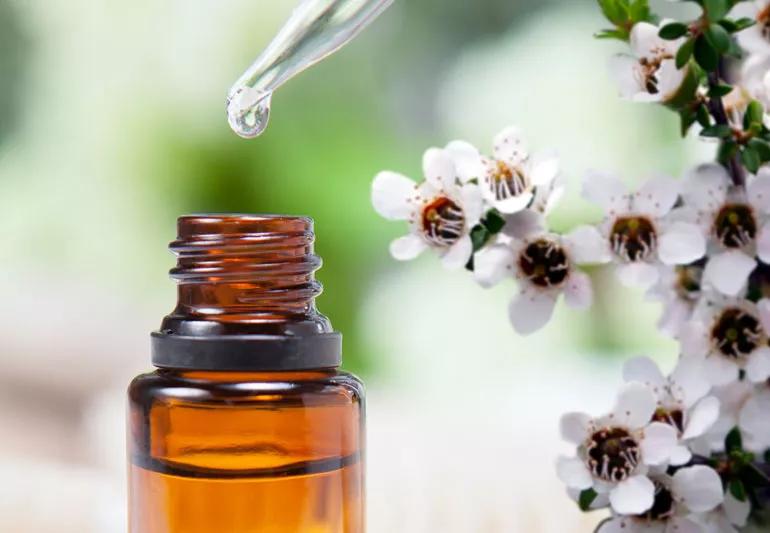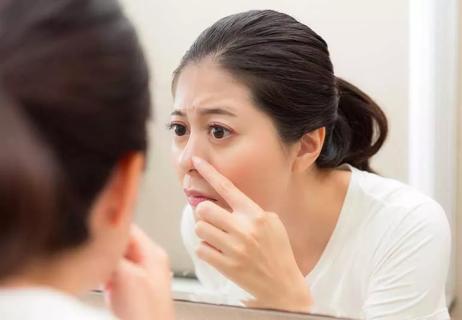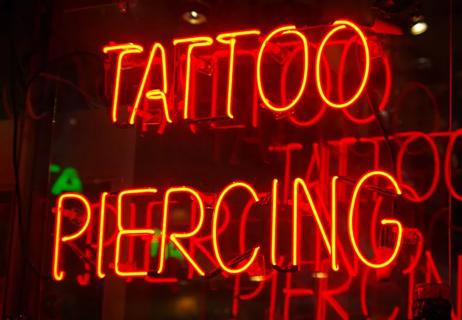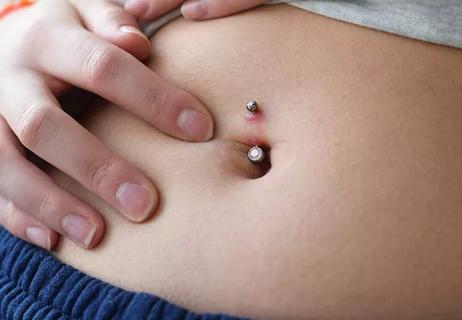It isn’t risk free and shouldn’t replace the aftercare recommended by your piercer

Tea tree oil (also known as melaleuca oil) is an essential oil that — in its diluted form — is used topically to treat a wide range of skin issues, from acne and athlete’s foot to dandruff and insect bites.
Advertisement
Cleveland Clinic is a non-profit academic medical center. Advertising on our site helps support our mission. We do not endorse non-Cleveland Clinic products or services. Policy
Tea tree oil is a great natural alternative to synthetic anti-inflammatories. And it has antiseptic properties to boot! But should you really be putting it on a fresh piercing? We asked family physician Simon Hodes, MB ChB.
Some turn to tea tree oil for wound care because of its natural antimicrobial and anti-inflammatory properties, but it can also dry out and irritate skin — especially if the tea tree oil isn’t properly diluted.
“Tea tree oil may well have a place in your piercing aftercare, but that’s a question of personal preference,” Dr. Hodes says. “I think it’s something I’d be very cautious about recommending medically because if you’ve got irritated or sensitive skin, you need to be very careful.”
Dr. Hodes is clear that you should always follow the aftercare instructions you get from your piercer. If you want to use tea tree oil, you should be doing so in addition to anything they recommend, not as a substitution for it.
While he doesn’t recommend it, Dr. Hodes notes that tea tree oil is generally safe to use on most piercings, with two big exceptions. First, tea tree oil is toxic when ingested, so you should avoid using it on any oral piercings. Second, genital piercings are particularly sensitive. They should only be treated as indicated by the piercer.
Advertisement
The way you prepare tea tree oil for piercing aftercare has a lot to do with how you plan on using it: As an added ingredient in your existing aftercare routine or another separate step. No matter how you’re using it, remember that tea tree oil always needs to be diluted before applying it to your skin.
If you’re looking for a quick way to cleanse your piercing between sea salt soaks, you can apply tea tree oil using a cotton round, cloth or paper towel. You can either:
Most piercers recommend twice daily sea salt soaks. If you’re not looking to add an extra step to your aftercare routine, you can add a drop or two of tea tree oil to your regular soak (be it a DIY or store-bought solution).
It’s important to keep the following in mind if considering tea tree oil for piercing aftercare:
Tea tree oil is a natural anti-inflammatory and has been found to have antiseptic properties. For that reason, some like to use diluted tea tree oil as part of their post-piercing aftercare.
While generally safe to use on most kinds of piercings (excluding piercings of the mouth and genitals), it’s important to exercise caution. Some people are allergic to tea tree oil, while others find it irritates their sensitive skin.
Whether or not to incorporate tea tree oil into your piercing aftercare routine is a good conversation to have with the person who gave you the piercing.
Advertisement
Learn more about our editorial process.
Advertisement

Earlobe piercings heal quicker and are less painful than cartilage piercings — proper cleaning and care are important

Soap, water and an antibiotic ointment are your best bet

Understand the risks and take precautions against infection

Twice-a-day cleaning with a saltwater solution can help you resolve (and avoid) problems

A dermatologist explains why it happens and how to address it

Early attention to skin wounds can help minimize their appearance later

Breathing, exercise, mindfulness and more can help you unwind and step away from your stress

Move a little more, eat a little healthier, sleep a little better and destress a lot

Babies can get congested easily, but you can calm their cough by keeping them hydrated, using nasal drops and running a humidifier

Weight loss may cause loose, sagging skin and muscle loss to your rear

Several conditions, like vitiligo and fungal infection, can cause a loss of pigmentation, leading to white spots or patches on your skin